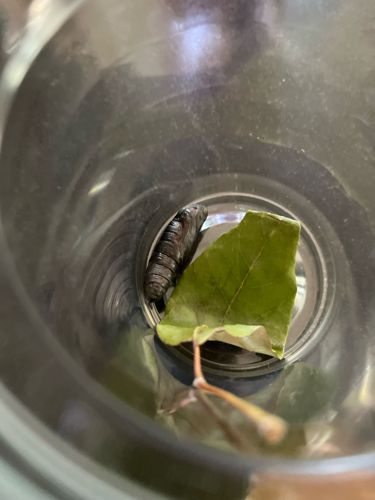Pupa (likely of a Sphinx Moth or Hawkmoth)
Scientific Name: Not identifiable to species from pupa stage alone, but typically within family Sphingidae
Order & Family: Lepidoptera (Order); Sphingidae (Family)
Size: Typically 3-8 cm (1.2-3.1 inches) in length, varying by species.

Natural Habitat
Found underground, in loose soil, leaf litter, or sometimes within loosely woven cocoons attached to plants, depending on the specific species. This image shows it in an artificial container, mimicking a confined space.
Diet & Feeding
As a pupa, it does not feed. It is a non-feeding, transitional stage. The larval (caterpillar) stage before pupation is herbivorous, feeding on specific host plants.
Behavior Patterns
The pupa is a quiescent, immobile stage in the life cycle of moths and butterflies, where the larva undergoes metamorphosis into the adult form. It remains still, undergoing significant internal reorganization. The pupal stage can last from a few weeks to several months, or even overwinter, depending on the species and environmental conditions. The color often helps it blend into its surroundings.
Risks & Benefits
Generally, pupae pose no direct risk to humans as they are immobile and non-feeding. As for benefits, members of the Sphingidae family (as adults) are important pollinators of a wide variety of flowers, especially those that bloom at night. The caterpillars can sometimes be considered pests if they feed on cultivated plants, but they are also a food source for birds and other predators within the ecosystem.
Identified on: 9/11/2025